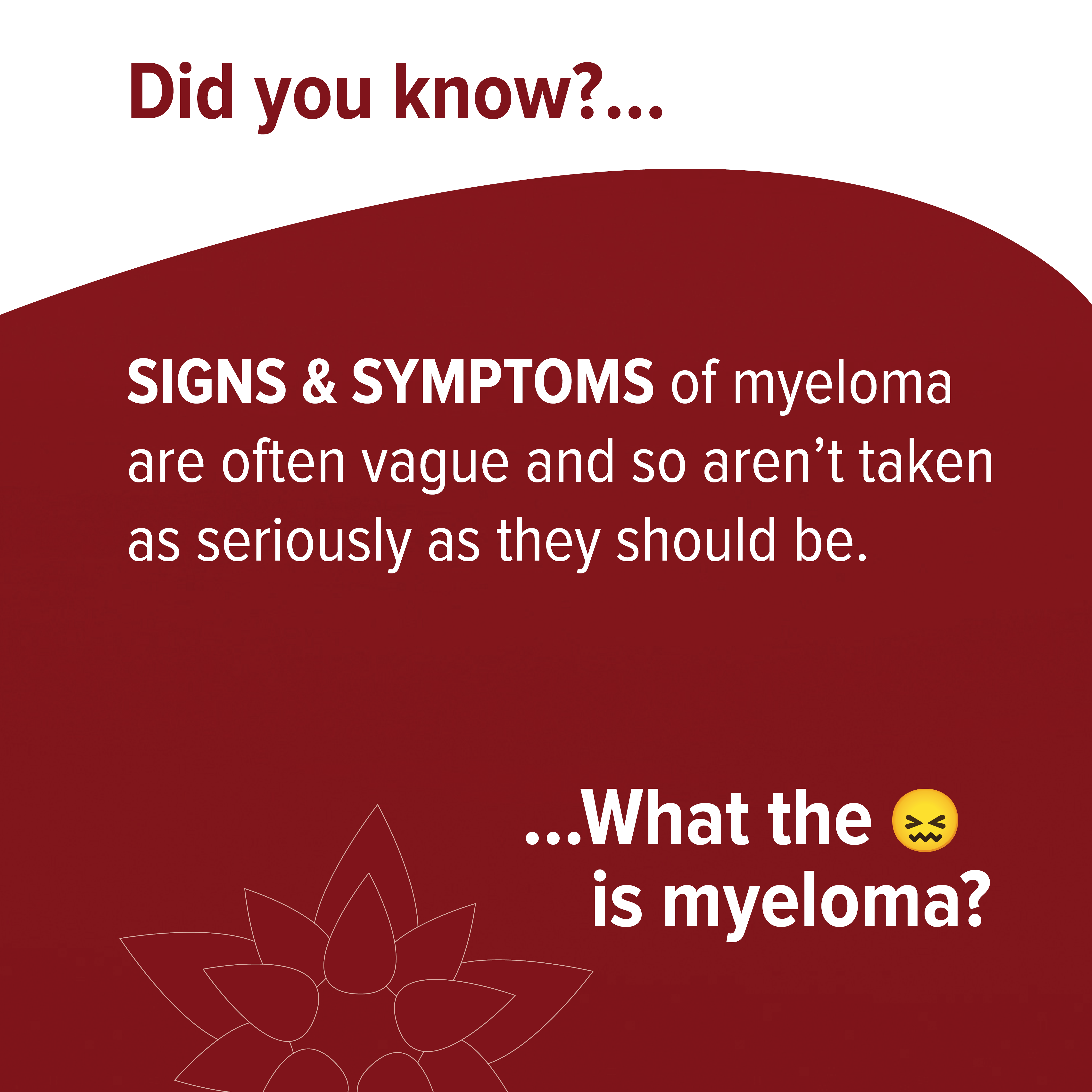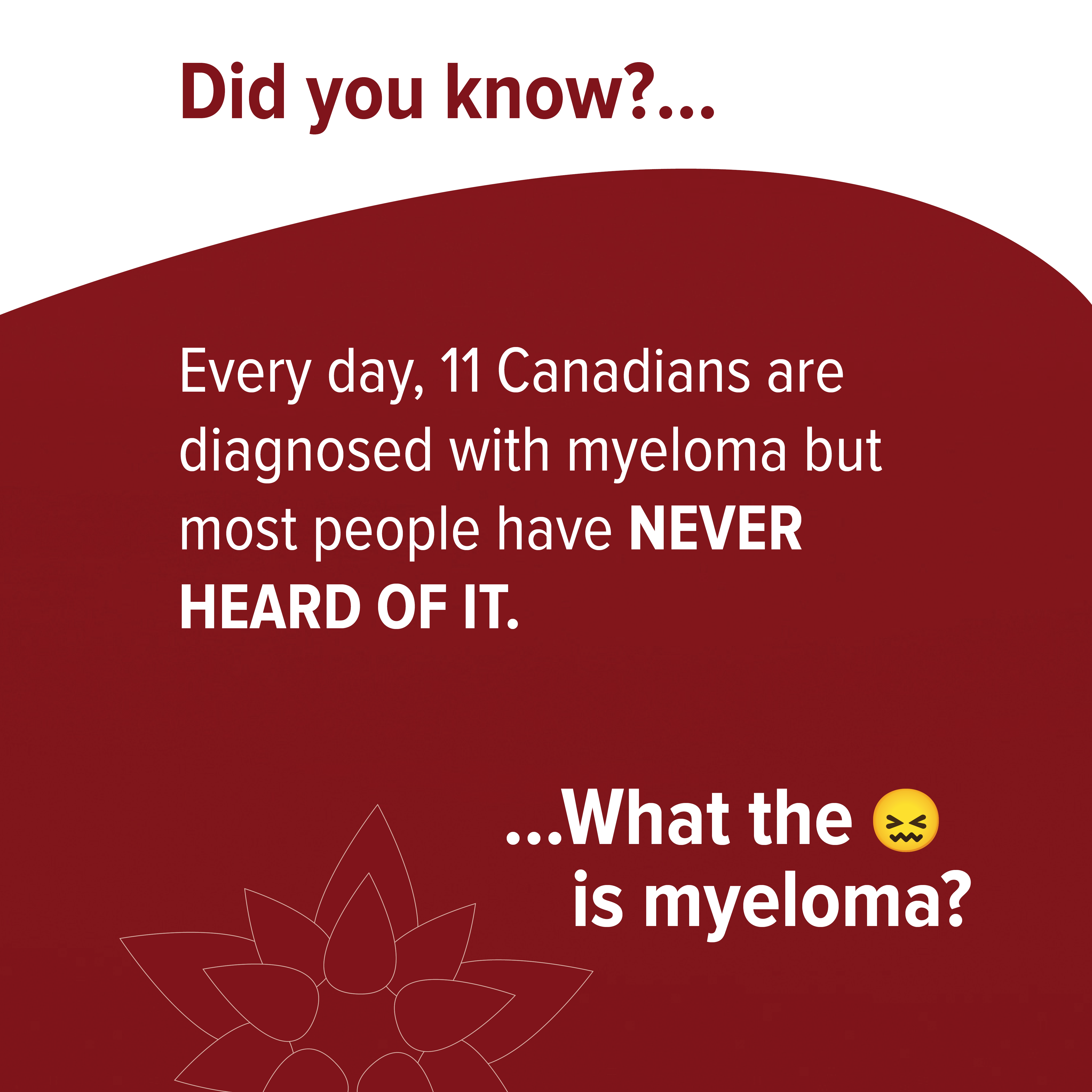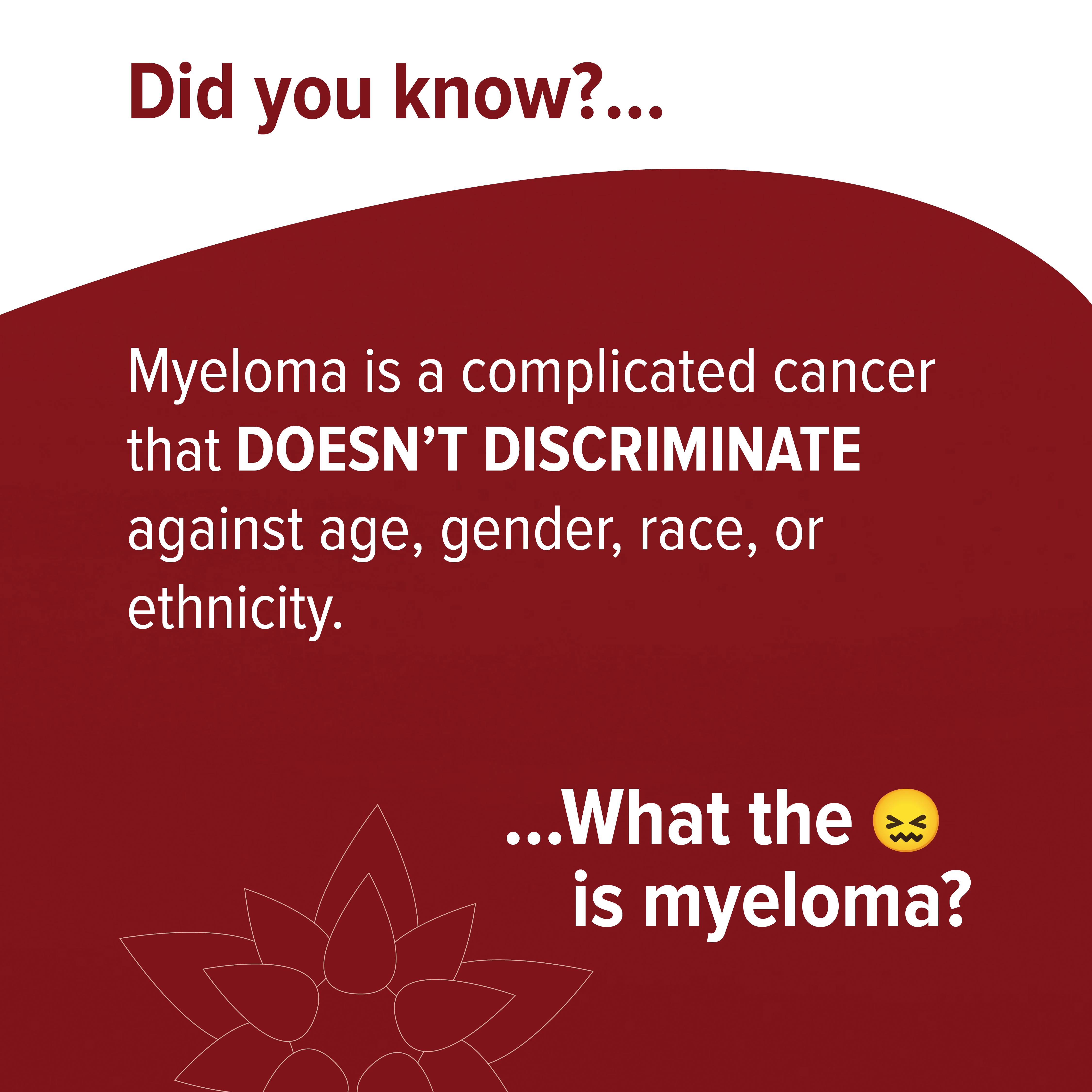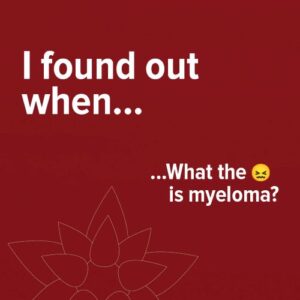March is Multiple Myeloma Awareness Month (MMAM).
And while nearly 4,000 Canadians are diagnosed with multiple myeloma every year,
the vast majority of Canadians don’t know what multiple myeloma is.
And that’s a huge problem. Multiple myeloma, also known as myeloma, is the 2nd most common blood cancerA term for diseases in which malignant cells divide without control. Cancer cells can invade nearby tissues and spread through the bloodstream and lymphatic system to other parts of the body. that is still without a cure, for now.
Please give as generously as you can
so every Canadian with myeloma, regardless of who they are or where they live, can look forward to a bright and hopeful future with those they love.
While myeloma may sound a lot like melanomaA cancer of the pigment-forming cells of the skin or the retina of the eye. Not associated with myeloma despite the similar-sounding name., they are most definitely not the same. Melanoma is a cancer that most often occurs in the skin; myeloma is a cancer of the plasma cellsSpecial white blood cells that produce antibodies. The malignant cell in myeloma. Normal plasma cells produce antibodies to fight infection. In myeloma, malignant plasma cells produce large amounts of abnormal antibodies that lack the capability to fight infection. The abnormal antibodies are the monoclonal protein, or M protein. Plasma cells also produce other chemicals that can cause organ and tissue damage (i.e. anemia, kidney damage and nerve damage)., a type of immune cellThe basic unit of any living organism., in the bone marrowSpongy tissue that is found inside your bones. It is soft, fatty and full of blood vessels. Your bone marrow is where most of the blood cells in your body are made..
The signs and symptoms of myeloma can be as diverse as the people living with this complex cancer, which often makes it challenging to diagnose. That’s why it’s vital to create as much awareness for myeloma as we can.
We need to reach every Canadian in every town, city, province and territory to inform them of the often vague signs and symptoms of myeloma so that more people experiencing early signs don’t overlook them. The sooner myeloma is diagnosed, the better the chances for a brighter prognosisThe projected outcome or course of a disease; the chance of recovery; the life expectancy..
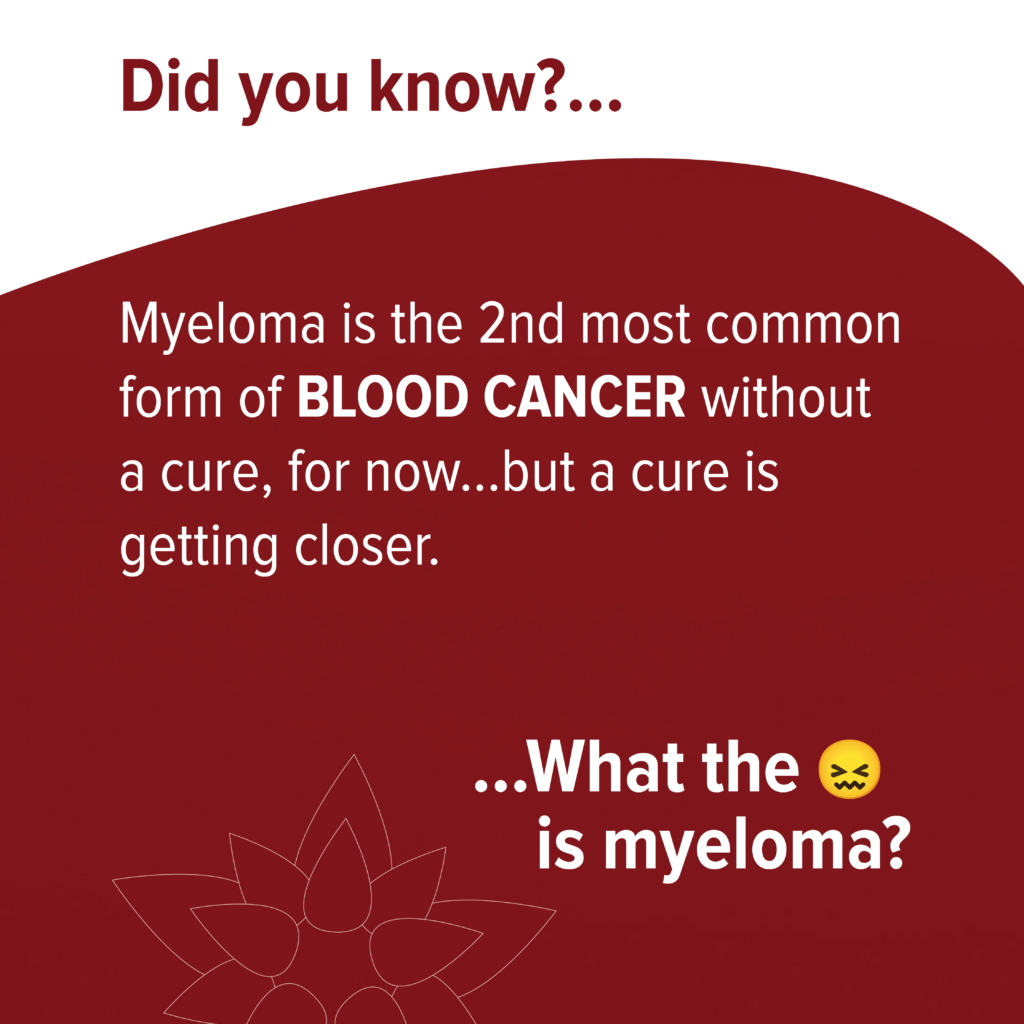
How you can help
Join us throughout the month as we introduce you to members of our community living with myeloma. Learn what prompted them to investigate their health, and ultimately how it led to their myeloma diagnosisThe process of identifying a disease by its signs and symptoms.. Click on the “Learn our stories” tab to find out more.
Create awareness for myeloma by liking, sharing/reposting our “I found out when…” and “Did you know…” posts, and add your own experience to them. See the “Files to share” tab for more ideas and artwork.
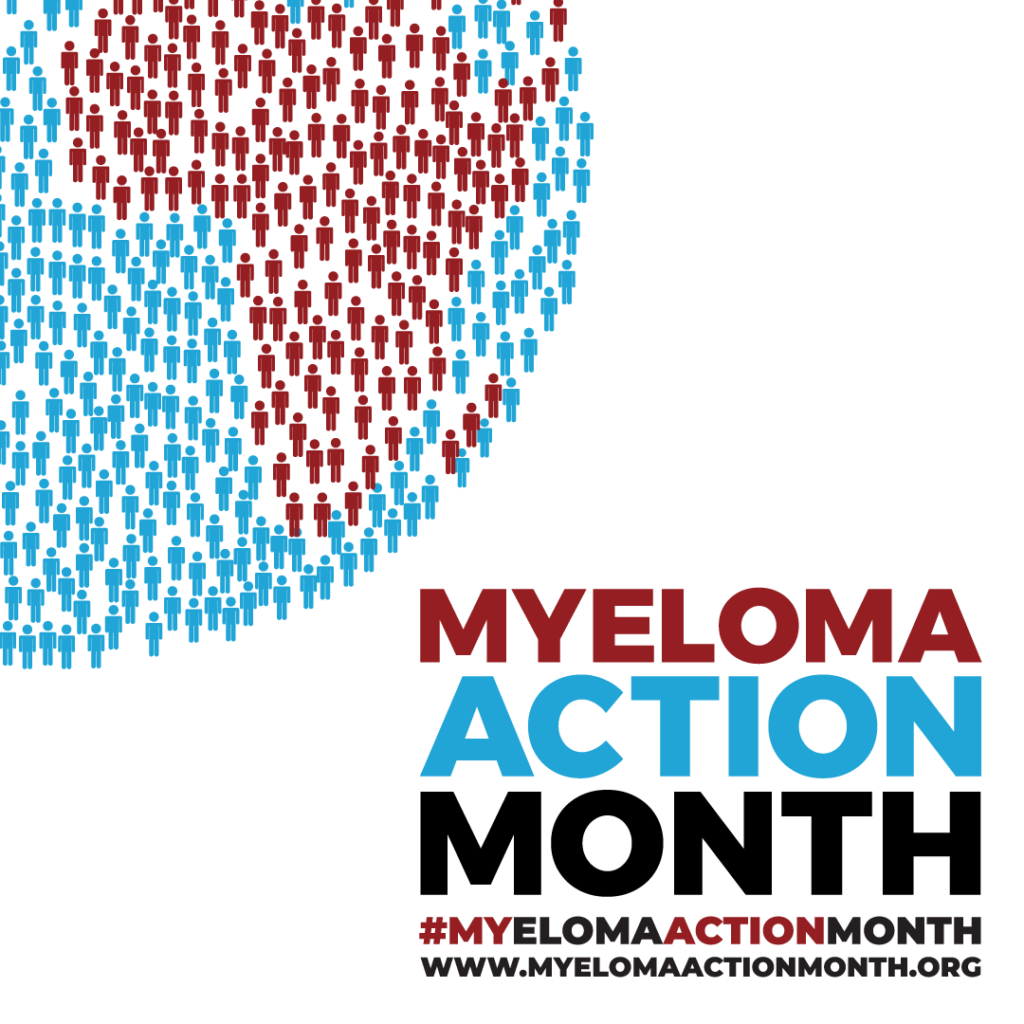
Global outreach: Myeloma Action Month
As proud members of the International Myeloma Foundation’s (IMF) Global Myeloma Action Network (GMAN), we’re also participating in a global initiative on taking action to raise international awareness for myeloma.
- If you would like to learn more, click here.
- To participate in the GMAN “What does myeloma mean to me” video campaign, please click here.
I found out when…
Meet some members of our community living with myeloma. Learn what prompted them to investigate their health, and ultimately how it led to their myeloma diagnosis.
Please donate today.
Your gift will enable thousands of Canadians with myeloma, their families and loved ones enjoy each other longer.
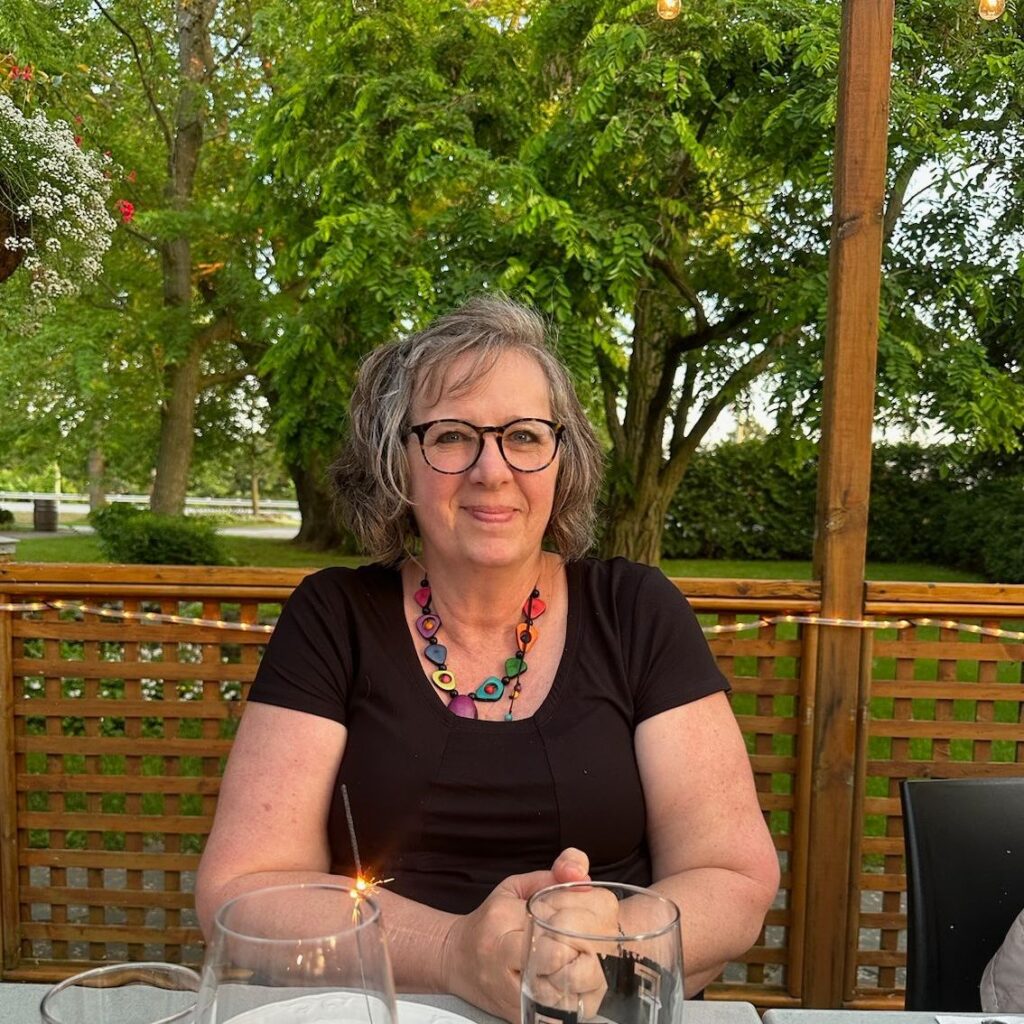
Lorelei
I find out when… I broke a rib PLANTING flowers.
My myeloma journey is atypical and started in 2005 with numbness in my legs. After 4 long years of tests and going from specialist to specialist, I finally received my diagnosis in 2009 at 47 years old. Everything was under control until I broke a rib planting flowers. This began the first of two relapses, countless surgeries, complications, and treatments. I’ve been on my current treatment for 7 years and am working, travelling, and enjoying friends and family, especially my grandchildren.
That’s my myeloma journey so far.

Phil
I found out when… I thought I TRAINED too hard.
For a few years prior to 2019 I was noticing that I couldn’t catch my breath while training for various (running) races. Along with shortness of breath came annoying back pain and persistent anemiaDecreased blood hemoglobin level. Hemoglobin is found in red blood cells and carries oxygen around the body.. My thought process was, I must be training too hard or it’s the inevitable by-product of old age.
A series of doctor appointments and bloodwork revealed the truth and in February 2019 I was diagnosed with multiple myeloma.

Miles
I found out when… My annual BLOODWORK results were UNUSUAL.
On December 18, 2018, I had my annual physical at my GP’s office. A week later he called me to come in. I saw him on January 19, 2019, and he explained that my blood countThe number of red blood cells, white blood cells, and platelets in a sample of blood. had dropped. I saw him again on February 8 and 15th. That’s when he referred me to an oncologistA doctor who specializes in treating cancer. Some oncologists specialize in a particular type of cancer treatment. who I saw a week later. I did numerous bloodwork and tests and was diagnosed with multiple myeloma on August 29, 2019.
That’s when I was diagnosed with myeloma.

Peter
I found out when… Intense BACK PAIN ended my golf game.
In 2019 I was golfing with my brother in Singapore when my lower back started to hurt more and more to the extent that I could not finish the last few holes. Co-incidentally a rainstorm rolled in and I was indeed thankful so that I could stop swinging my clubs. Two weeks later and back in Canada, an MRI scan showed a large plasmacytomaA collection of plasma cells found in a single location rather than diffusely throughout the bone marrow, soft tissue, or bone. in my lower back and a pathological fractureA break in a bone usually caused by cancer or some disease condition. Occurs in myeloma-weakened bones, which can't bear normal weight or stress..
That’s how my myeloma diagnosis started.

Sylvia
I found out when… I couldn’t CATCH MY BREATH.
In 2021, I found I couldn’t catch my breath just doing simple things like housework, going up a flight of stairs, or a short walk. I thought it was due to the Covid shots and I would get better in due time, which it didn’t. I finally went to the doctor and she started with testing my heart with a blood test which then led to further blood testing.
That’s when I was diagnosed with myeloma.
“Over the past 25 years, research has completely changed our understanding of multiple myeloma and its treatments. Although we are not yet able to speak of a cure on a large scale, successes are accumulating, with life expectancy and quality of life constantly improving. The field of immunotherapyTreatment that stimulates the body's natural defenses to fight cancer. Also called biological therapy. is extremely promising in the search for a cure, and so we must continue to invest in research.”
– Dr Richard LeBlanc
University of Montreal Myeloma Canada Chair on Multiple Myeloma
at Hôpital Maisonneuve-Rosemont, Montreal, QC
Please donate today.

Myeloma is the 2nd most common form of blood cancer without a cure, for now…but a cure is getting closer.
Myeloma is a complex cancer that can affect each person differently. Some may experience bone pain while others none at all. That’s why there’s no such thing as “one treatment fits all” when it comes to treating myeloma. What works for one person may not work for another; each case must be assessed individually for the best outcomes.
- Learn more about myeloma here.
- Read more on treatment options and possibilities here.
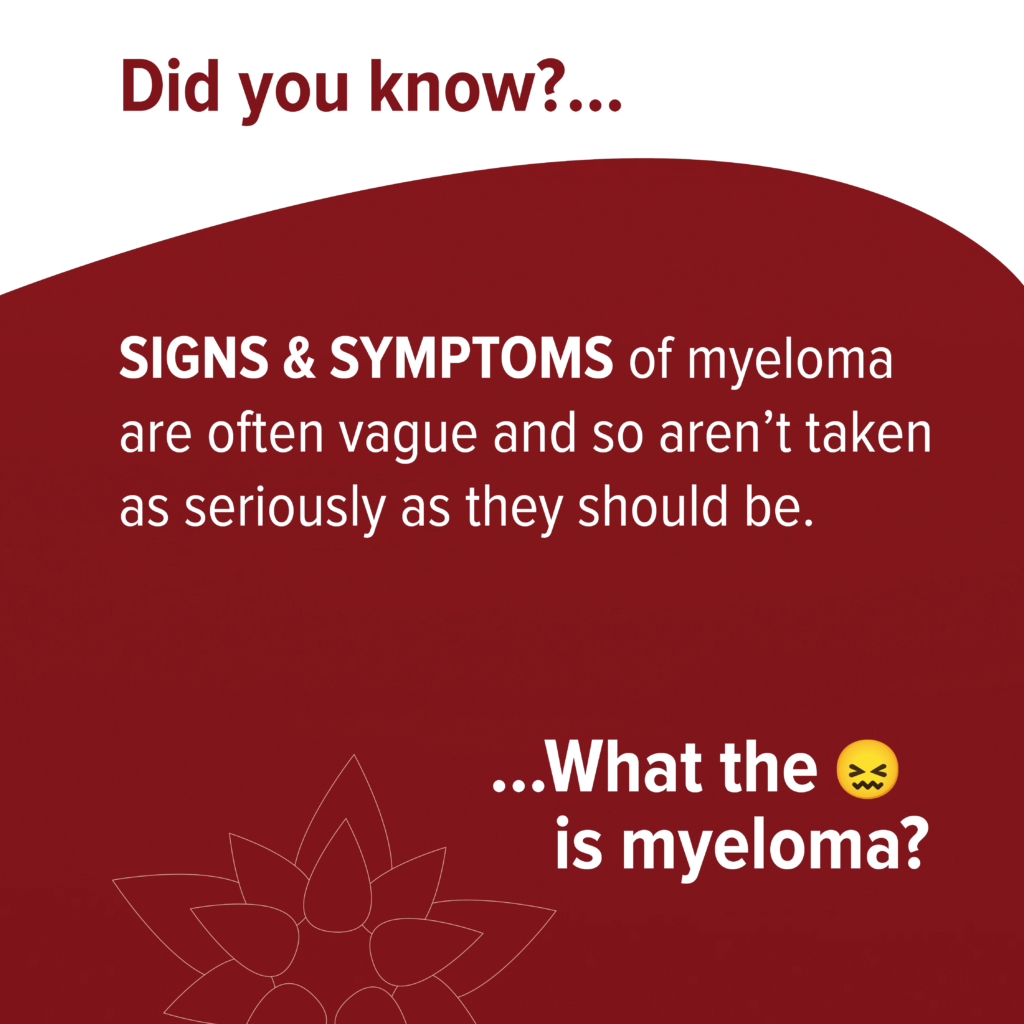
Signs and symptoms of myeloma are often vague and so aren’t taken as seriously as they should be.
Because bone pain, fatigue, anemia, or shortness of breath are also common to stress or getting older, these signs and symptoms of myeloma are often overlooked for too long. Trust yourself. You know your body and how it should feel, and if it doesn’t feel right, say so. It’s also important to note that in the early stages of myeloma, there may not be any signs or symptoms at all. That’s why it’s so important to do your annual blood work, even when you feel well!
- Learn more about the signs and symptoms of myeloma here.
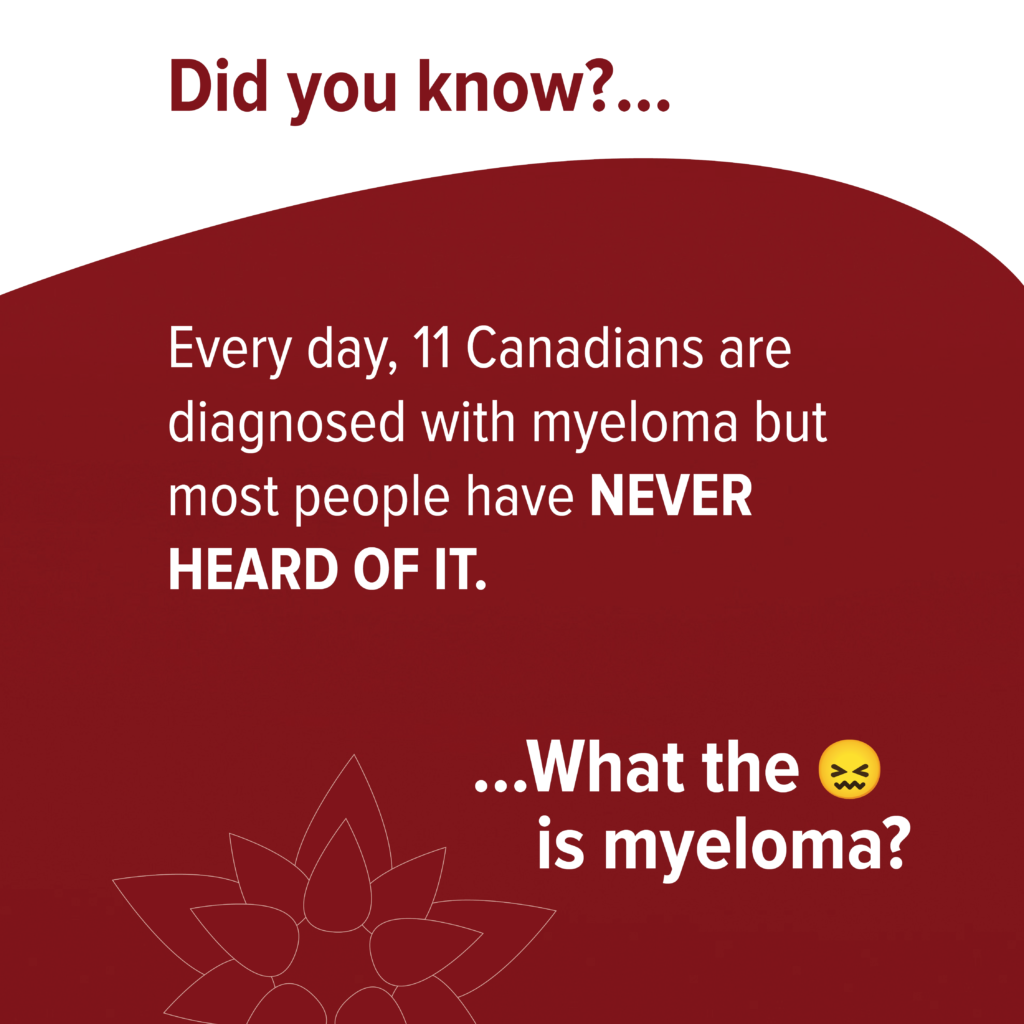
Every day, 11 Canadians are diagnosed with myeloma but most people have never heard of it.
Even though there are more individuals living with myeloma than ever before – thanks to better diagnostics, advances in treatments and drug therapies, and an aging population – most people first hear the words ‘myeloma’ when they or someone they love are first diagnosed.
- Learn more about diagnosing myeloma here.
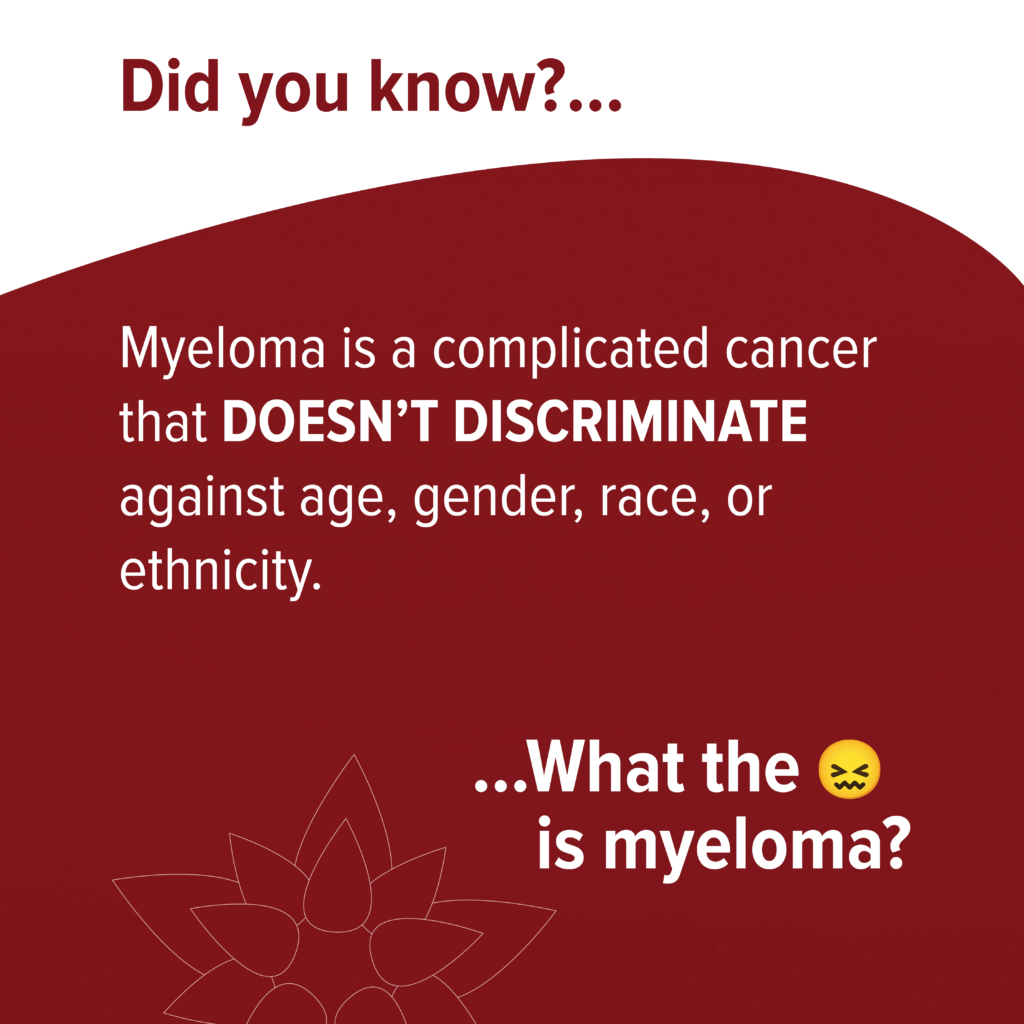
Myeloma is a complicated cancer that doesn’t discriminate against age, gender, race, or ethnicity.
Myeloma is not, ‘just an older person’s cancer’. While it may be more common in older populations, people in their 20’s through to their 90’s are also hearing the words, ‘you have myeloma’. The same holds true for race and gender. While myeloma is slightly more prevalent in the Black male population, myeloma doesn’t belong to one race, gender or ethnic group.
- Learn more about important risk factors and what causes myeloma here.
- For more on Canadian Statistics, click here.






